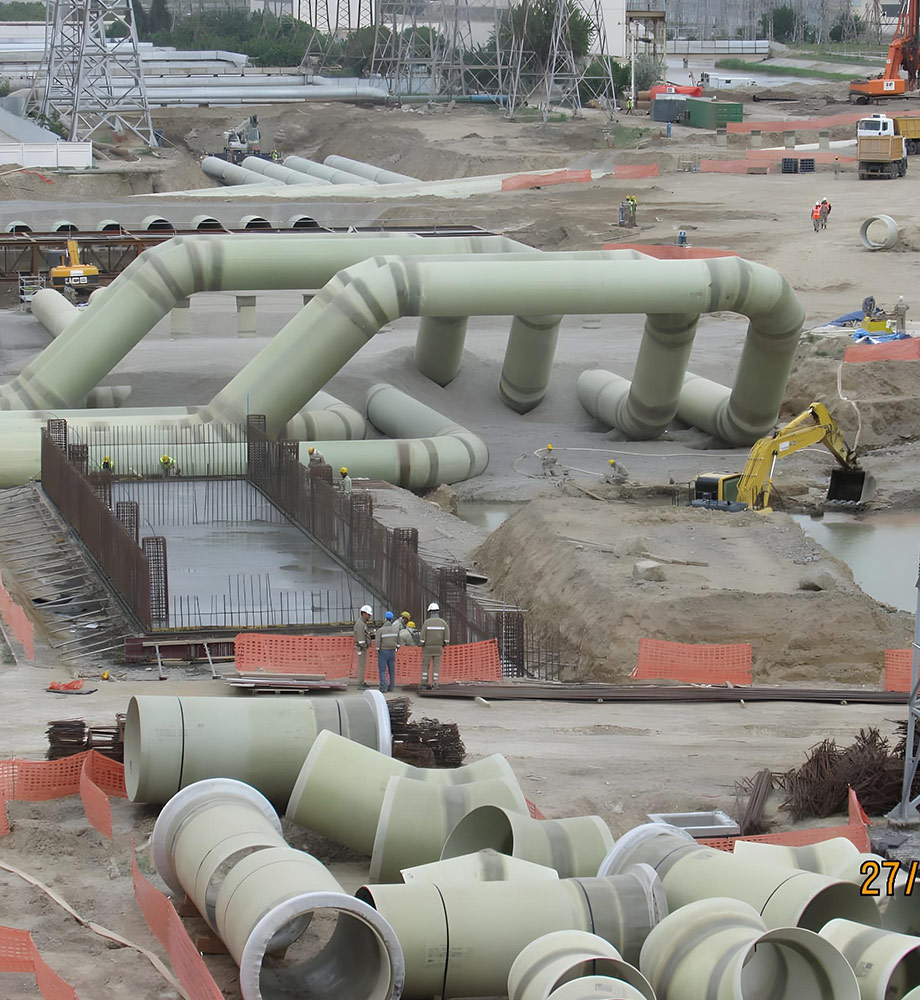Key Features
- Similar construction to FRP slurry pipe (filament-wound with corrosion liner).
- Custom routing in basins and pump areas, often with integrated pump nozzles and splits.
- Flanged or grooved joints for pump connections.
Benefits
- Smooth Operation: FRP’s smooth bore minimizes wear on pump parts and avoids plugging.
- Reliable Circulation: No corrosion means piping integrity is maintained, preventing unscheduled shutdowns.
- System Integration: Can include FRP strainers, valves, and transitions in a complete FRP loop.
Applications
Typically runs from the absorber bottom to the recirculation (slagging) pumps and from pump to tank. These pipelines are essential in wet FGD, where the slurry is continuously recirculated. FRP tubing is also used for chemical dosing lines in the recirculation circuit.
Technical Specifications
- Diameter: Often 6″–24″, per flow requirements.
- Pressure: Designed for pump discharge (usually up to 50 psi).
Unique Selling Points
Our FRP recirculation loops are engineered for ultra-low leakage and vibration resistance. We can supply matched FRP pump adapters, wyes and elbows so that the entire recirculation flow path is composite. This eliminates the need for metal contacts on wetted surfaces, unlike mixed-material loops.

